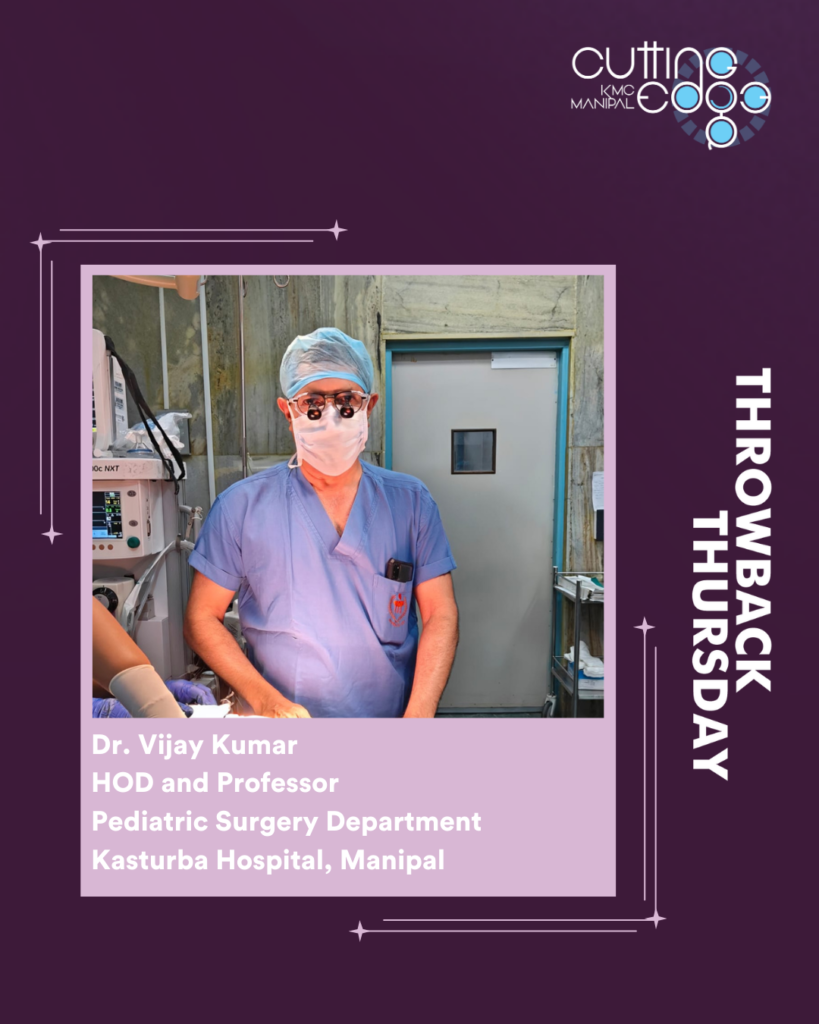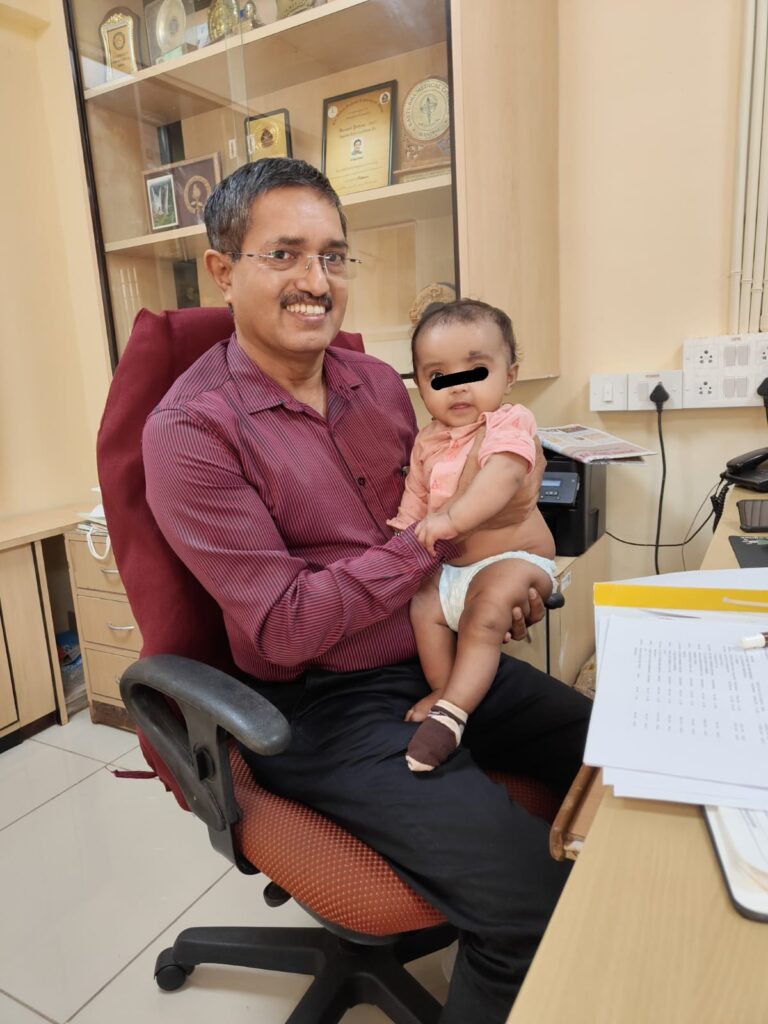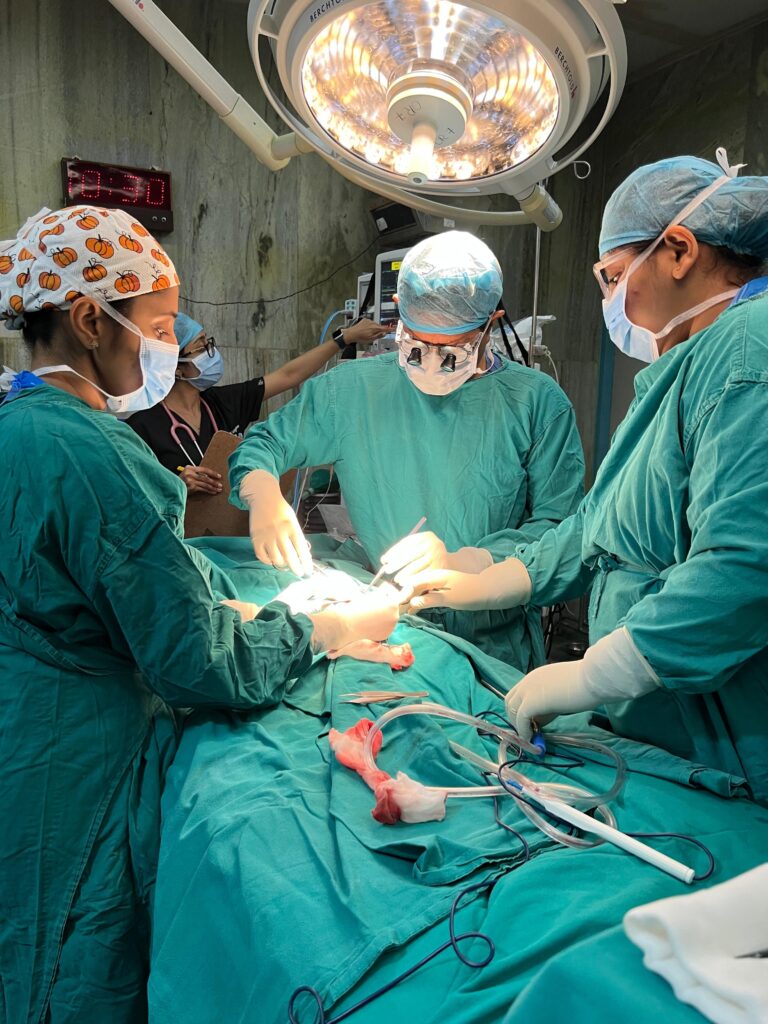Content Credits: Chandini Kadankot Maniyeri, Paridhi Kaushik
Design Credits: Medha Chatterjee, Samanvitha Balaji
Web Post Credits: Saachi Girish Kurudi

What are the most common surgical conditions you encounter in pediatric patients, and how do they differ in approach compared to adult surgeries?
Common surgical conditions in children include hernia, undescended testis and benign cysts/sinuses as day care surgeries. Acute appendicitis, different types of intestinal obstruction, torsion testis/ovary and foreign body aspirations are commonly done emergencies. In pediatric urology, congenital anomalies of the kidney(hydronephrosis) and genitalia(hypospadias) are very common. In newborn babies’ common surgical conditions include Diaphragmatic hernia, esophageal atresia, intestinal atresia and anorectal malformations.
Pediatric surgical patients can not be treated as small adults because their anatomy,
physiology, metabolic, immature organ system and developmental considerations are different from adult. As these kids have difficulty in expressing pain or distress, fear and separation anxiety, both the kid and parents requires careful preoperative counselling and needs a tailored approach in the entire process of surgery
How do you navigate the decision-making process between surgical and non-surgical treatment options in pediatric cases?
The balance between surgical and non-surgical options in pediatric surgery comes down to understanding the individual child’s needs, the condition’s severity, the potential outcomes, and family preferences. Often, this involves close collaboration between the surgeon, pediatrician, and family, alongside careful monitoring over time. Surgery is considered when it will provide the best chance of improving the child’s health, function, and quality of life, but conservative management is always prioritized when appropriate.
If you could make one significant change in the healthcare system for pediatric patients, what would it be?
If I could make one significant change to the healthcare system in India for pediatric surgical patients, it would be to create a nationwide network of specialized pediatric surgical centers that provide accessible, high-quality care for all children, especially those in rural and underserved areas. This network would focus on improving both the availability of specialized pediatric surgical services and the timeliness of care.

How has your experience as a pediatric surgeon shaped your perspective on healthcare and life?
For someone working in this field, the combination of medical knowledge, human connection, and the challenges that come with treating young patients likely leads to a deep, nuanced understanding of healthcare, the fragility of life, and the power of hope. Working in pediatric surgery, particularly in life-or-death situations, often leads to a deep sense of gratitude for the small moments in life. The resilience of children, the recovery of a patient, or even the peaceful passing of a child who has received compassionate care may lead a pediatric surgeon to cherish life more fully. Their experiences with patients who overcome incredible odds may cultivate a belief that life is precious and should be embraced with gratitude, love and purpose.

What have been some of the challenges in balancing clinical responsibilities with your leadership role as HOD and how has it shaped your approach to mentoring young surgeons?
As the HOD, the role extends beyond patient care to include leadership, departmental planning, budget management, strategic decisions, and quality assurance. At the same time, maintaining clinical excellence is critical to my credibility as a leader and to the reputation of the department. Pediatric surgery can be emotionally taxing, given the nature of treating seriously ill children, often with complex, high-stakes cases. Balancing this emotional weight with the responsibility of managing a department can sometimes lead to burnout, especially when the demands of both clinical and leadership roles overlap. I believe in mentorship that’s practical and rooted in the realities of the job, helping young surgeons understand the complexities of both clinical work and leadership. By fostering a culture of collaboration, emotional support, and continuous learning, I aim to guide them not only to be skilled surgeons but also effective, compassionate leaders in their own right.
How do you build trust with young patients who may not fully understand what’s happening?
A gentle approach with a warm smile can help alleviate fear in these patients. Create a friendly and safe environment by getting down to their level (both physically and figuratively) to make them feel comfortable. We need to tailor our language based on the child’s age. Always involve parents or caregivers for reassurance and comfort. Be patient and give them time to process, acknowledging their feelings. Use positive reinforcement to encourage and build confidence. Incorporate familiar items like toys or blankets to provide comfort. The key is to build rapport and empathy from the very first interaction, and to keep things as calm and predictable as possible.
